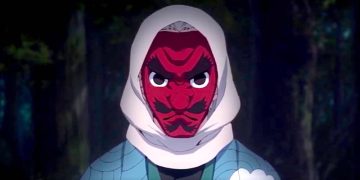One exciting thing about anime is that sometimes the story features real-world locations that you can actually visit in person—except they're drawn in the vision and style of the anime.
Indeed, the directors and illustrators of anime don't just put effort into their character designs, but also into the backgrounds and settings that give life to the story.
Some of these real-life places are iconic enough that you might recognize them even if you've never been to Japan, but sometimes the real-world location is itself mundane and only noteworthy because a certain event or plot point just happens to take place there.
From tourist spots to iconic scenes, here are some of the most beautiful real-life places and locations featured in anime.
15. Yamagata City

Only Yesterday is an anime movie about an office worker from Tokyo who spends her holidays in the countryside of Yamagata City in Yamagata Prefecture, featuring the agricultural lifestyle of the folks there.
It's a rural place at the northern end of the Japanese mainland that was used as the main setting in Isao Takahata's Studio Ghibli movie.
The movie shows Takahata's appreciation for the simple and solemn beauty of life on the farm, including the safflower fields. The Yamagata Safflower Festival is a must-see event in Japan.
14. Dogo Onsen

According to one tale, one thousand years ago there was a heron who had an injured leg—and immersed it into the hot spring coming from a rock in a place that's now widely known as Dogo Onsen. It's said to be a healing spring, one that allegedly restored that heron's leg.
This place is the inspiration for the spectacular bathhouse of Yubaba, which is the most important location in Spirited Away. Whenever it's featured, its designs closely resemble the real-life bathhouse.
Dogo Onsen is the oldest hot spring resort, located to the east of central Matsuyama and is the main attraction of that place. It's a public bathhouse made of wood, with two indoor baths (the larger bath is the Kami no Yu while the Tama no Yu is the smaller one).
13. Arashiyama Bamboo Forest

Kyoto is the center of traditional Japanese culture, and is thus surrounded by hundreds of Buddhist and Shinto temples and shrines.
One of the main tourist spots located outside the center is a forest of bamboo plants known as the Arashiyama Bamboo Forest. One of Isao Takahata's films, The Tale of the Princess Kaguya, was inspired by the historical and spiritual settings of this forest.
Arashiyama Bamboo Forest is located in the Arashiyama District in Kyoto, about 500 meters out (approximately one-hour walk at normal speed). But it's quite a sight, so you should take your time and be engulfed by the enthralling grove of towering bamboo grass.
12. Sayama Hills

In the anime film My Neighbor Totoro, Mei and Satsuki met the yokai (named Totoro) who lives in the forest after moving to an old house near said forest. Totoro gave the two girls many adventures that were amazing, glamorous, and full of fun.
It's said that Sayama Hills was the inspiration for the green scenery in Hayao Miyazaki's film. Sayama Hills is located in northwestern Tokyo and southwestern Saitama prefecture.
It's a land that covers 3,500 hectares and is the habitat for more than 1,500 species of animals and plants. This peaceful forest is under the care of the local people and organizations.
11. Inokashira Park

Inokashira Park was featured in the series Great Teacher Onizuka, in which Eikichi Onizuka submerged his delinquent students' heads in the water using his own unique delinquent style of teaching.
Inokashira Park was opened in 1917 under the name "Inokashira Imperial Grant Park (Inokashira Onshi Kōen)," stating that the land and its area were given to the public by the Emperor. It's a famous spot for anyone who wants a view of the iconic Sakura trees.
10. Fukue Island

Barakamon is an anime that starts with a professional calligrapher, Seishu Handa, who punches an old man after he criticized him for his not-by-the-books style of calligraphy.
He's then sent to the countryside in Fukue Island. Fukue Island is one of the largest and most populated places in the Goto Islands.
Though it's not mentioned by name in the anime, the island is known for its natural beauty including white sand beaches, churches, and mountains that provide great views of the neighboring islands.
9. Jisshōzan Jōrinji Temple

The main setting in the anime Anohana: The Flower We Saw That Day is the Jisshōzan Jōrinji Temple in Chichibu City. The main characters used to play there when they were kids, and it's also the place where they reunite as teenagers.
In real life, Jisshōzan Jōrinji Temple is a small temple and not a playground for children, though there's a nearby park just a few houses away. On top of its interesting history, it also holds religious significance for the people who live there.
8. Suga Shrine

Suga Shrine is one of the Shinto shrines located in Shibuku, Tokyo. There used to be two different shrines during the Edo period, namely the Gozu Tennō Shrine and the Inari Shrine.
The two became Suga Shrine after the Meiji Restoration and became a spot for picture-taking groups of people—especially the staircase—unlike most Shinto shrines that are still solely for religious rituals.
In the anime film Your Name, it was the place for the epic final moment for Mitsuha and Taki, the two people who lived and communicated with each other across two different timelines.
7. Akihabara

Steins;Gate is an anime series set in Akihabara, Tokyo. You may notice the tower where the time machine crashes into. Well, that tower exists in real life, which is the Radio Kaikan of Akihabara.
It's not just cool because it was featured in an anime—Akihabara is also a paradise for otakus and anime fans, filled with otaku shops and anime merchandise sellers. The building clearly distinguishes itself among other structures with its anime-inspired atmosphere.
6. Lake Motosu

Laid-Back Camp (also known as Yuru Camp) is an anime series revolving around the story of girls and their camping trips, resulting in a plot that features several iconic spots, destinations, and sceneries.
The first breathtaking view found in the anime series is Lake Motosu. With its detailed art and animation, Laid-Back Camp makes the whole setting look and feel like the real thing.
Lake Motosu is one of the Fuji Five Lakes (Fujigoko) and is located in the Yamanashi Prefecture. It's a picture-perfect spot where you can capture the view of the lake and Japan's famous Mt. Fuji in one frame.
5. Tomonoura Port

The setting in Studio Ghibli's animated film Ponyo (also known as Ponyo on the Cliff) was heavily inspired by a real-life seaside town named Tomonoura in Fukuyama, Hiroshima Prefecture.
From the circular harbor to the houses and roads in view, Ponyo perfectly captured the ambience of the real town. Partnered with Studio Ghibli's unique animation style, Hayao Miyazaki's film delivered a fairy tale story that's worthy of all the awards it got.
But Tomonoura's greatness isn't only in anime! In fact, it's considered one of the official Japan Heritage sites of Chūgoku region.
4. Yokohama City

The Bungo Stray Dogs anime series is set in Yokohama, a city located in Kanagawa Prefecture of the Kanto region. It's home to many sightseeing spots, from museums and parks to cultural sites.
As such, across the series, you'll find scenes featuring different places throughout the city, including one of Japan's largest art institutions: Yokohama Museum of Art.
There's also Harbor View Park (one of the scenic spots featured in the series where Atsushi Nakajima and Kyōka Izumi go on a "date") as well as France Yama (the location where a major event takes place between the Armed Detective Agency and Port Mafia).
3. Shirakawa-gō

The anime series Higurashi When They Cry takes place in a fictional village called Hinamizawa, where creepy dark secrets lurk. Hinamizawa was based on a small traditional village called Shiragawa-gō, located in Shirakawa of Gifu Prefecture.
Contrary to what the anime depicts, the real-life Shirakawa-gō isn't filled with darkness and despair but rather lush greeneries and a peaceful, rural atmosphere. Shiragawa-gō is popular for its unique house construction style—known as gassho-zukuri—which was also seen in the anime.
Shirakawa-gō is one of Japan's treasured sites, which remains protected by both its inhabitants and the Japanese government, and today it exists as one of UNESCO's World Heritage Sites.
2. Asakusa

Unlike the aforementioned Akihabara, its neighboring ward Asakusa offers an experience that's more toward the traditional side of Japan.
From the old shrines to the shopping districts, you'll find yourself going slightly back in time, like traveling the streets on a rickshaw while in a traditional kimono (from kimono rental shops).
One of the main attractions in Asakusa is the Asakusa Kannon Temple, which is Tokyo's oldest temple. One of the gates leading to the temple—the Kaminarimon ("Thunder Gate")—is a picture-perfect spot featuring the huge gate and its distinct lantern and statues.
Asakusa has been featured in several anime series, most notably Fire Force (in which the Asakusa Arc involved Asakusa as a ward governed by the Special Fire Force Company 7) and Demon Slayer (in which Tanjiro Kamado meets Muzan Kibutsuji in a Taishō-era Asakusa).
1. Tokyo Tower

Tokyo Tower has been featured in many movies, including Godzilla and King Kong, along with tons of anime series and anime films. And why wouldn't it? No image in Japan is more iconic than Tokyo Tower.
Examples of anime that feature Tokyo Tower include Case Closed, Sailor Moon, Tokyo Magnitude 8.0, Cardcaptor Sakura, and Death Note.
Though Tokyo Tower was primarily a communications tower, its observatories became a main attraction for tourists. Those who want to witness an aerial view of the area will enjoy the scenery here.
Aside from the observatory decks situated above, it also has a museum and food shops for refreshment at its base, the FootTown.















